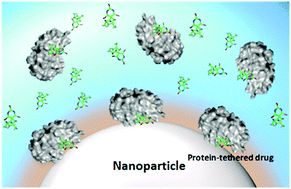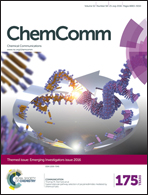Integration of protein tethering in a rapid and label-free SERS screening platform for drugs of abuse†
Abstract
Surface enhanced Raman spectroscopy (SERS) has emerged as a promising technique for the rapid and ultrasensitive detection of molecular species such as drugs of abuse in biofluids. Yet, it remains a significant challenge to create a viable screening tool for multiple drug classes, owing to the lack of affinity of certain species for the SERS substrate and to the matrix interference in complex media. Here we report a protein tethering SERS approach, which blends plasmonic enhancement with facile drug binding, to engineer a rapid, label-free and versatile screening tool for narcotics. By exploiting the known binding attributes of human serum albumin, we determine the effective concentration of narcotics present in solution through differential enhancement of the spectral markers. In conjunction with chemometric methods, this approach not only enables unambiguous recognition of different drug classes, such as barbiturates, opiates, amphetamines and benzodiazepines, but also offers a lower limit of detection in comparison to direct SERS application. Through molecular docking simulations, we probe the mechanistic underpinnings of the protein tethering approach paving the way for narcotic detection in clinical samples in the near future.

- This article is part of the themed collection: 2016 Emerging Investigators

 Please wait while we load your content...
Please wait while we load your content...